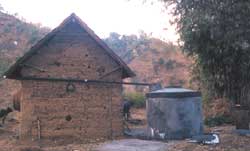| |
A NEW BEGINNING |
|
| Revelling in rain New rain centre in Chennai |
||
CAMPAIGN |
||
| The rights denied Guardians of lakes Rescuing isolated wetlands |
||
IN FOCUS |
||
| Return of the khatris Chandela bunds in bind |
||
INITIATIVE |
||
| Creating
water warriors: CSE trains plumbers and masons Meet us every Friday! Reaping the benefits New dawn Roofwater tappers Every drop counts Harvesting Hope: Sixth Paani Yatra Pride of Doon Tackling water scarcity Turning point |
||
CSE'S LATEST DESIGNS |
||
| Model
projects: Showing the way Eco-conscious business sense |
||
TECHNOLOGY |
||
| Recipe for
greenery Hi-tech filter Better management Can we create rain? |
||
JAL BIRADARI |
||
| Jal
sunwai in Indore |
||
JAL YODHAS |
||
| Shanta
Sheela Nair Vijay Kumar |
||
NEWS FROM CHENNAI |
||
| Temple tank
revived Looking beyond A study planned |
||
NEWS FROM GUJARAT |
||
| Rebuilding
Bhuj |
||
FUNDING AGENCY |
||
| Japan's
loan for rural development |
||
NEWS FROM ABROAD |
||
| Nepal:
Have milk instead.... Bangladesh: Antidote to arsenic |
||

| Vol. 4 | No. 3 |
June 2002 |
 |
Ferrocement tanks collecting every drop of roofwater |
Thati Senua, a village in Sujanpur block, Himachal Pradesh, is optimally harnessing rainwater in khatris and in ferrocement tanks to meet their daily requirements. In the process, they have set an example for others to follow. Says Anuradha Thakur, deputy commissioner of Hamirpur, "We are hoping that the success of rooftop rainwater harvesting at Thati Senu villagewould encourage other villages to take up such initiatives."
|
Till recently, the villagers have been primarily dependent on khatris, as the state’s piped water supply was released weekly and sometimes just once in a month. Moreover, with the increase in the number of families from two to 27, in last fifty years, the demand for water has been on the rise.The villagers tried to solve the problem by constructing some new khatris. The problem was abated to a certain extent. But more was needed.
The days of misery ended when a survey report suggested the diversion of roof water to the ferrocement tanks as an option to meet the demand. Following the suggestion, in 14 houses these tanks were constructed with government funds. "The villagers contributed ten per cent of the total cost in the form of shramdaan (voluntary labour).
While explaining the feasibility of this technology, Satish Sharma, project officer in district rural development authority, said "Most of the area around the village comprises of hard bouldary strata. As a result most of the rain flowed out without being utilised. Thus, it made complete sense to catch rainwater and use it for domestic purposes. The ferrocement tanks were opted for as these are relatively cheap and have maximum life in relative terms."
Adds RK Rana, junior engineer of Sujanpur block,"The capacity of a ferrocement tank (5,000 litres) was decided on the basis of the daily requirements of one family and the rainfall pattern of the region. This amount is sufficient for a family for about a month."Premchand, secretary of gram sabha, said "We have enough rain during the monsoon. Catching rain has solved our problems that used to emerge with the onset of summer."